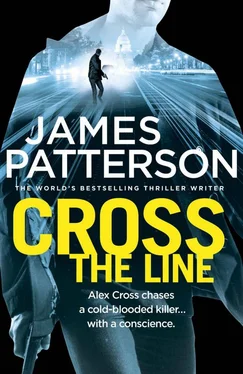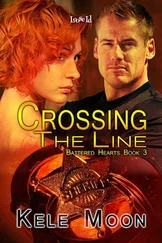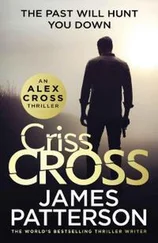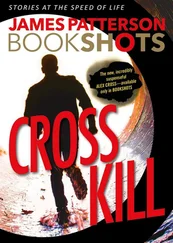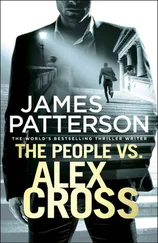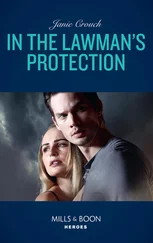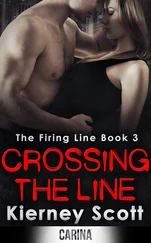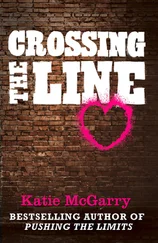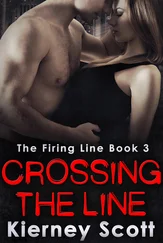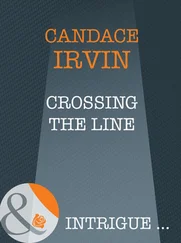“They’re all a match for this gun,” Muller said, handing over the suicide .45 in an evidence bag.
“Says who?”
“I dunno,” Muller said. “Someone here.”
“I can call up the report,” Bree said, pulling out her phone.
Noble held up her hand. “I believe you. So all you’re looking for is confirmation that the ammunition in this box matches these six rounds?”
“Exactly,” Bree said.
“It should be easy,” the tech said. “We have everything Federal makes in the SAF, the standard ammunition file.”
She looked at the end of the box. “Personal-defense grade, two hundred and thirty grain. Pretty standard for a forty-five semiautomatic.”
Noble opened the box, took out one of the fourteen remaining bullets, looked at it, and frowned. “That doesn’t match.”
“What?” Muller said. “You haven’t even looked at the others.”
“I don’t need to,” Noble said, miffed. “The unfired cartridges here might indeed match the killing rounds, but they do not match the labeling on the Federal box.”
“No markings around the primers, right?” Bree said.
Noble cocked her head in appreciation and nodded. “That is correct, Chief Stone. All commercially made handgun ammunition has a stamp indicating manufacture and caliber on the brass around the primer.”
“Which means what?” Muller asked.
“Which means that these are hand loads,” the tech said. “Someone bought the components — the brass, the powder, the primer, and the bullets — and built these to custom specifications.”
“We didn’t see any hand-loading equipment at Howard’s apartment or in the storage unit,” Muller said.
“He could have hired someone to build the bullets,” Noble said.
“So do they all match?” Bree asked.
“Give me a few minutes,” Noble said, and then she looked at Muller. “You neat enough to get coffee and bring it back?”
“On my best days,” Muller said, and he gave her that goofy grin again.
While Noble told Muller how to get to the cafeteria, he continued to moon at her. Bree happened to look at the ammunition tech’s left hand. No ring.
She fought not to laugh. Muller was smitten!
Part of her wanted to mention his kidney stones or one of his other ailments, but she took pity and said nothing when he hurried off.
“He’s an odd duck,” Noble said, starting to work on the bullets.
“He kind of grows on you after a while,” Bree said.
“Married?” the tech asked.
“Divorced.”
“Hmm,” Noble said, and she kept at her work.
Twenty minutes later, Muller returned. The ammunition specialist didn’t look his way. She stared at the image of a bullet on her computer screen.
He put the coffee in front of her, and she said, “The bullets in the box are a match for the used slugs. They’re all Bear Creek moly-coated two-hundred-grain RNHBs. Which are about as far as could be from the specs on the box. These were made by and for an expert to exact, competition-level specs.”
“You mean like three-gun competitions?” Muller asked.
“Or straight pistol on a combat range,” the tech said.
“That’s a problem, then,” Bree said. “As far as we know, Terry Howard never competed with a pistol, never built his own bullets, and was not a gun nut. Well, not a pistol nut.”
“Howard could have gotten the custom ammunition with the gun,” Noble said. “Bought them from the owner.”
Bree said, “Or maybe an expert shot, someone who competes with a forty-five handgun and builds his own ammo, killed all three of them and framed Howard to get away with it.”
They waited until the heart of the cloudy night before turning on night-vision goggles and climbing over the chained and locked aluminum gate.
Hobbes and Fender went over smoothly, making no sound. But John Brown’s bad knee was acting up again. As he straddled the gate, the chain clinked ever so softly.
Brown landed on the dirt road on the other side. A dog barked once, straight to the south, five, maybe six hundred yards. Brown saw in his night-vision goggles that Hobbes was holding up his hand for him not to move.
Another bark, and then nothing for five long minutes.
“Like a cat, now,” Fender whispered through a jawbone microphone, and he began to pad down the dirt driveway.
Fender wore fleece-bottomed booties over his sneakers. They all wore them and barely made a sound moving deeper and deeper into the property. The dog stayed quiet.
That wouldn’t last long with a trained canine listening and scent-checking the wind. For the moment, however, they had it made from a scent perspective. A sturdy breeze blew right in their faces. The dog’s superior nose was disabled.
But sooner or later, one of the German shepherds would hear something or perhaps see them moving into position. If the noise was blatant or the dog got a solid look at them, it would certainly bark and sound an alarm. Things would get difficult then, but not untenable.
If the movements and noises they made were soft and irregular, however, the dogs would be uncertain and would come to investigate. And that would make things easier all around.
They crossed a clearing without alerting the dogs and crept closer. Slats of light from the house were visible through the trees when Hobbes toed a rock. It rolled and tumbled into the ditch.
The dog barked once. Brown and his men froze, listening, and heard a low growl and then a heavy dog’s nails clicking and scraping on porch floorboards. They’d anticipated something like this scenario and stayed with their plan. Hobbes stepped off the right side of the driveway into the ditch. He leaned against the bank there, both hands gripping a pistol with tritium night sights.
Brown and Fender did the same on the left side of the drive, back to back, with Brown facing the house with his pistol, Fender covering their trail with an ultralight, suppressed backpacking rifle.
Rather than circling to catch their scent in the wind, the dog came directly at them, trotting confidently down the driveway and into the dense pines where they waited.
When the dog was fifteen yards away, Hobbes pulled the trigger, causing a burst of pressurized air to drive a tranquilizer dart into the animal’s shoulder.
It made a soft yipping sound, staggered to its left, panted, and went down.
No one budged for another five long minutes, during which Brown caught the faint sound of — cheering? And where was the second dog? Inside?
Hobbes moved first; he stalked forward to the edge of the yard, Brown right behind him. Fender passed them and stuck to the shadows, moving to the right and up onto a dirt mound where he could get a better look at the front of the house.
Brown paused next to Hobbes, hearing the voices of announcers and seeing the flicker of a television through the partially open blinds of the room to the right of the front door.
“See anything in there?” he murmured.
A few moments later, Fender said, “College football highlights playing on the big-screen, but I’m not seeing anyone in there watching. Dark, though. Lot of shadows. Hard to tell.”
“I’m going,” Brown said, and he moved slowly across the yard, heading past a Grady-White fishing boat toward a motorcycle. He crouched by the side of the bike and worked at a leather saddlebag strap with leather gloves.
When Brown had it open, he drew out from his jacket a plastic ziplock bag that held a kit wrapped in dark cloth. He got the kit free of the plastic and placed it behind a tool kit in the saddlebag.
Then he reached into a top pocket and fished out a film canister. He opened it and spilled the contents onto the gas tank.
Читать дальше
